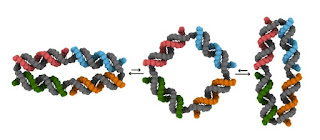Scientists have discovered two gene editing techniques to fix mutations that cause diseases like cystic fibrosis and Duchenne muscular dystrophy. Both diseases, and about half all human genetic disorders, are caused by mutations in single letters in the human genome, in which an ‘A’ appears where there should be a ‘B.’
The newly-developed gene editing systems can target the smallest units of human DNA or RNA to undo the mutation that causes cystic fibrosis. One system edits DNA in the genome itself, while the other targets RNA, which transports genetic messages for making proteins. The editing systems work in living cells, and if researchers can find ways to deliver them to human patients safely and effectively, they could be used to reverse the mutations that cause genetic diseases.
DNA and RNA contain four base components: adenine, thymine, guanine and cytosine. Cystic fibrosis is caused by an inherited genetic mutation that leads to abnormal mucus production in the lungs and digestive system. The thicker-than-normal mucus builds up in and blocks airways. It can be managed with breathing machines, inhalers and medications, but some affected by it will eventually need lung transplants. There is no cure for cystic fibrosis and it can be fatal.
Cystic fibrosis could be prevented or corrected if only there were a ‘G’ in the genome where the disease’s victims have an ‘A.’ The new gene editing technologies could rewrite the part of the genome or its messenger that spells cystic fibrosis. The gene editing system is technically called the Adenine Base Editor, or ABE.
The ‘A’ in ABE is for ‘adenine,’ one of four chemical bases that are the smallest elements of our genomes. Adenine is always paired with thymine, and guanine is always paired with cytosine. ABE targets the ‘A,’ adenine, and rearranges its atoms to turn it into guanine. So, where there is an incorrect AT set of base pairs in the genome, ABE can reset it to a GC.
These genetic editors give scientists the remarkable ability to rewrite any mutated base pair in the genome. The gene editors are developments on the CRISPR technology which allows scientists to efficiently target and edit the genome.
RNA editing avoids interfering with the genome itself. Because RNA plays a communication role in humans, rather than being the fundamental genetic information itself, changes to it might be more flexible, and reversible.
However, RNA degrades over time, so the impermanence of changes to its component parts (called nucleoside bases) could be disadvantageous too.
haleplushearty.blogspot.com



